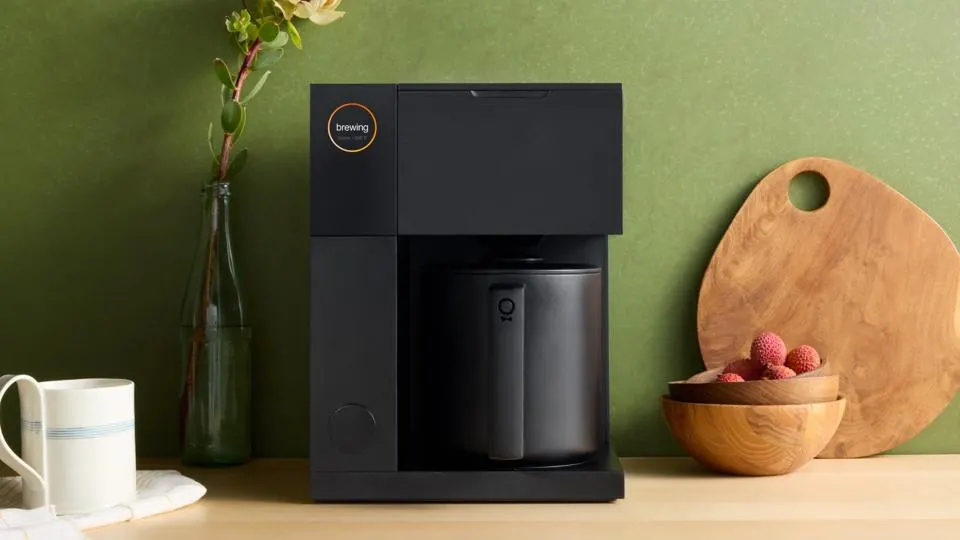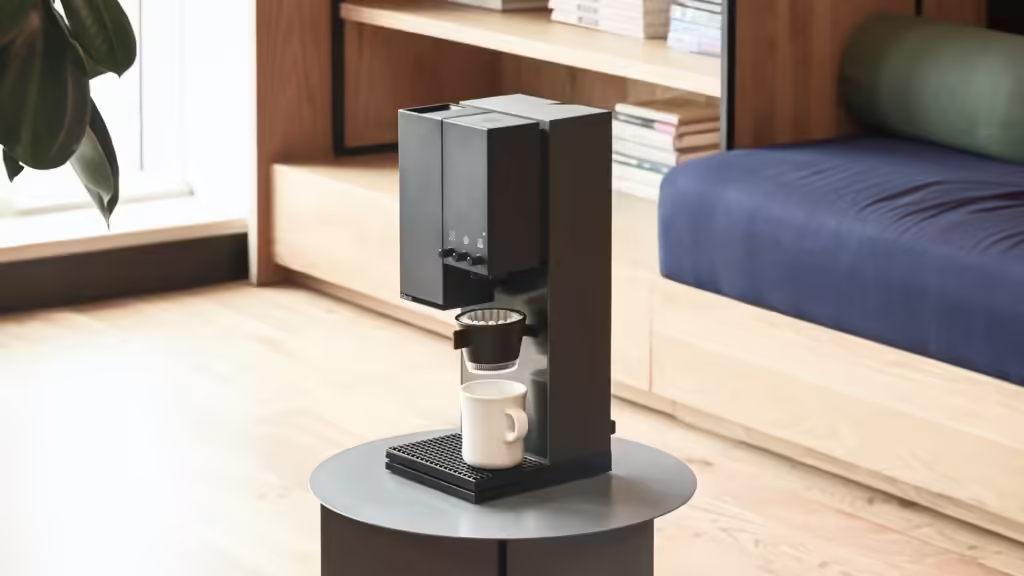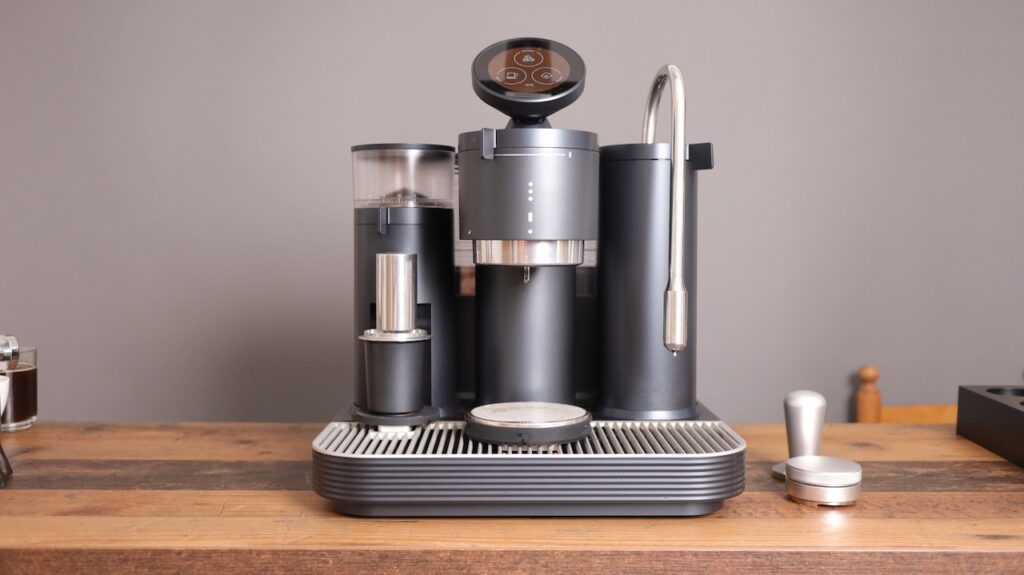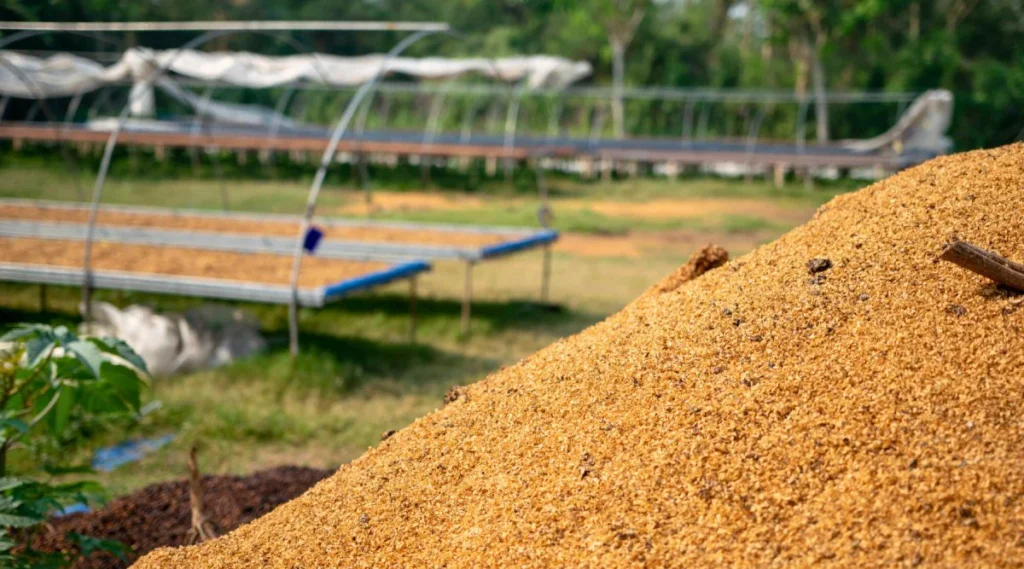

Your La Marzocco espresso machine is an investment in the perfect cup of coffee, and like any great investment, it needs regular upkeep to stay in peak condition.
From daily cleanings to deeper monthly maintenance, keeping your and maintaining La Marzocco espresso machine running smoothly will not only extend its lifespan but also ensure that every shot of espresso is as flavorful as the last.
Preventative maintenance, including yearly professional servicing, is crucial to avoid unexpected breakdowns and costly repairs. Routine practices such as replacing worn parts and addressing hidden issues are key to prolonging the machine’s lifespan and ensuring optimal performance.
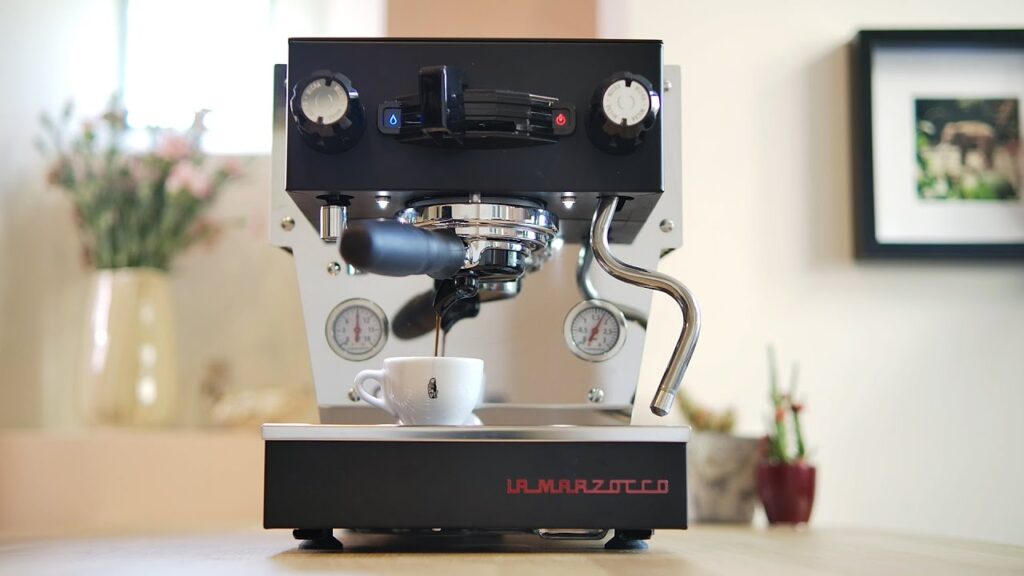
In this guide, we’ll walk you through the best practices to keep your La Marzocco in tip-top shape. These maintenance tips will help you avoid unnecessary repairs and maintain the exceptional quality La Marzocco is known for.
Daily Cleaning Routine
Keeping your La Marzocco espresso machine clean on a daily basis is crucial for maintaining both the taste of your coffee and the longevity of your machine. A quick yet thorough cleaning routine will prevent buildup and ensure that each shot of espresso is brewed under optimal conditions.

Here’s a simple daily cleaning checklist:
Flush the group head: After each use, run hot water through the group head to clear away coffee grounds and oils.
Clean the portafilter: Rinse the portafilter immediately after every shot, and give it a deeper clean at the end of the day. Make sure there’s no leftover coffee residue, which can affect the flavor of your espresso.
Wipe the steam wand: Immediately wipe down the steam wand after each use with a damp cloth. Purge it by running steam for a few seconds to clear out any milk residue inside.
Empty and clean the drip tray: The drip tray can fill up quickly, so be sure to empty it frequently throughout the day and give it a wash at the end of the day to avoid bacteria buildup.
Wipe down surfaces: Use a clean, damp cloth to wipe down all surfaces, removing any stray coffee grounds or spills that might have happened during the brewing process.
Backflush with a blind filter: Use a blind filter to backflush the machine daily. This helps remove debris that might obstruct water flow, improving coffee extraction and flavor.
Monthly Maintenance Tips
While daily cleaning is essential, monthly maintenance takes it a step further to ensure your La Marzocco machine continues to function flawlessly. Monthly care addresses the deeper buildup that can affect performance over time, keeping your machine working like new.

Here’s what you should focus on each month:
Backflushing with detergent and descaling solution: Once a month, perform a backflush with an espresso machine-safe detergent and a descaling solution. This removes any hidden coffee oils or residue that can clog up the internal parts over time. Be sure to follow your machine’s manual for the correct steps.
Check and clean the shower screen: The shower screen can accumulate coffee particles, which may affect water distribution and shot quality. Remove it, give it a good clean, and reinstall it once it’s spotless.
Inspect and clean the group gasket: Over time, the gasket can collect oils and coffee particles, leading to leaks or poor shot extraction. Remove the gasket and give it a good scrub, or replace it if it’s showing signs of wear.
Clean the portafilter baskets: Deep clean the portafilter baskets by soaking them in hot water with a little espresso machine detergent. This helps remove oils and coffee residue stuck in the mesh.
Inspect the water filter: If your machine uses a water filter, check its condition and replace it if necessary. A clogged filter can affect water flow and lead to poor extraction or even machine damage.
Drain and descale the brew boiler: Regularly draining and descaling the brew boiler is crucial to prevent build-up that can affect your machine’s performance. Use a proper descaling solution and follow the manufacturer’s guidelines to ensure the process is done safely and effectively. Proper care of the brew boiler helps maintain optimal function and prevents issues like clogged pipes and valves.
Descaling Your Machine with Descaling Solution
Descaling your La Marzocco is a critical part of maintaining its performance, especially if you’re using hard water. Over time, minerals like calcium can build up inside the machine, reducing water flow, affecting temperature consistency, and even leading to costly repairs if not addressed.
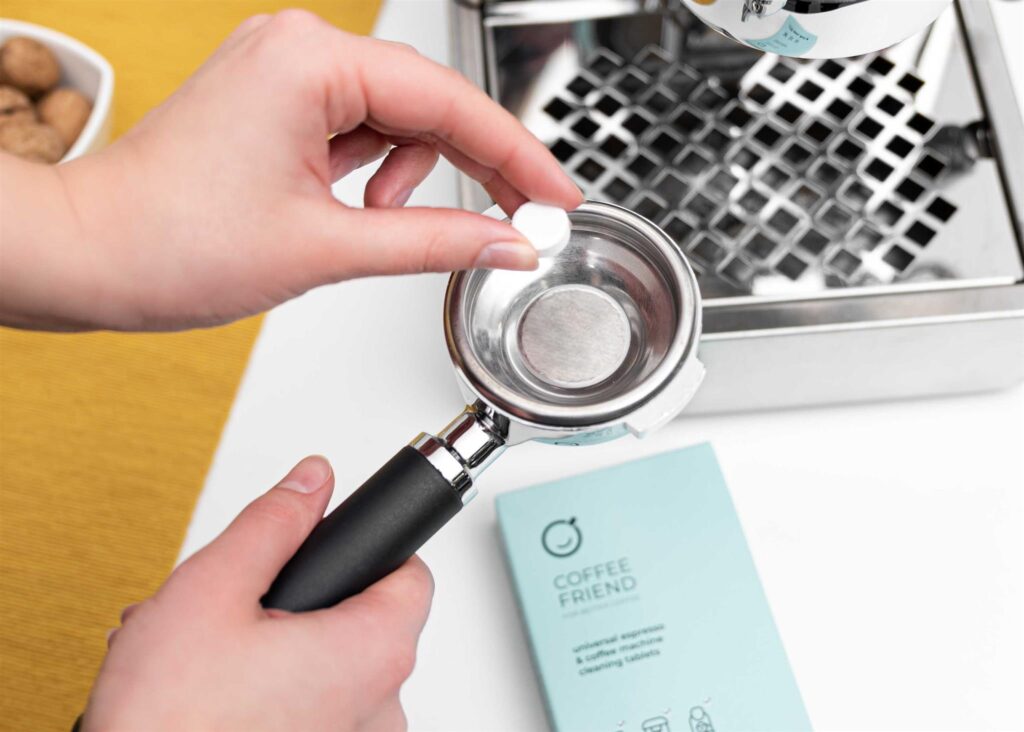
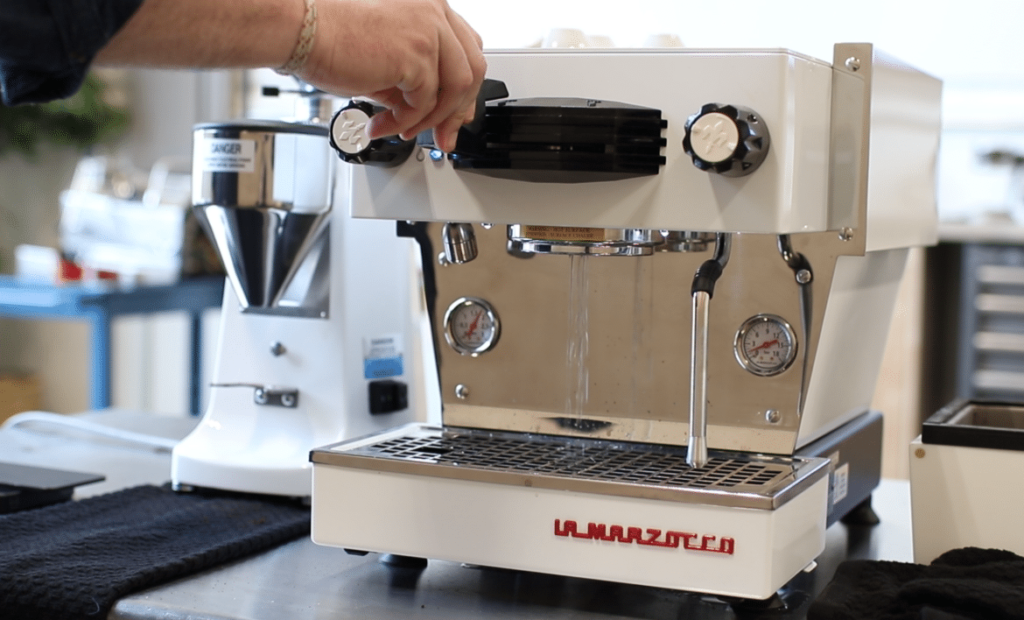
Here’s how to descale your machine properly:
Prepare the descaling solution: Use a descaling solution that’s safe for espresso machines. Follow the manufacturer’s instructions to mix the solution properly, ensuring it’s the right concentration for breaking down mineral deposits without damaging the internal components.
Run the solution through the machine: Pour the descaling solution into the water reservoir. Run the solution through the machine just as you would if you were pulling a shot of espresso. Make sure to cycle the solution through the group head, the brew boiler, and the steam wand, as mineral buildup can occur in all these areas.
Let it sit: Once the descaling solution has passed through the machine, turn it off and let the solution sit for about 15-30 minutes. This allows the solution to break down any stubborn scale inside the brew and steam boilers and pipes.
Flush with clean water: After the solution has done its job, flush the machine thoroughly with clean water. Run several cycles of fresh water through the group head, brew boiler, and steam wand to remove any remaining descaling solution. This is crucial for preventing any off-tastes in your espresso.
Descale the steam boiler: To descale the steam boiler, ensure the machine is off and cool. Carefully drain the steam boiler to clear out any mineral buildup. Follow the manufacturer’s instructions to safely add the descaling solution to the steam boiler, then let it sit for 15-30 minutes. Afterward, drain and flush the steam boiler with clean water to remove any descaling solution.
Wipe down the machine: After descaling, give the exterior of the machine a good wipe-down, and ensure that all parts are dry before you start brewing again.
Descaling should be done every 3-6 months, depending on your water hardness and usage. This simple process helps prevent scale buildup from impacting your machine’s performance, ensuring it runs smoothly and produces excellent espresso.
Common Issues and How to Fix Them
Even with the best care, your La Marzocco may experience issues from time to time. Knowing how to identify and fix these problems can save you both time and money. Whether it’s an issue with water pressure or a leaky steam wand, addressing these problems quickly will keep your machine in top shape. It’s also crucial to know when to descale a new machine to avoid potential issues like dislodging scale that could clog the components.
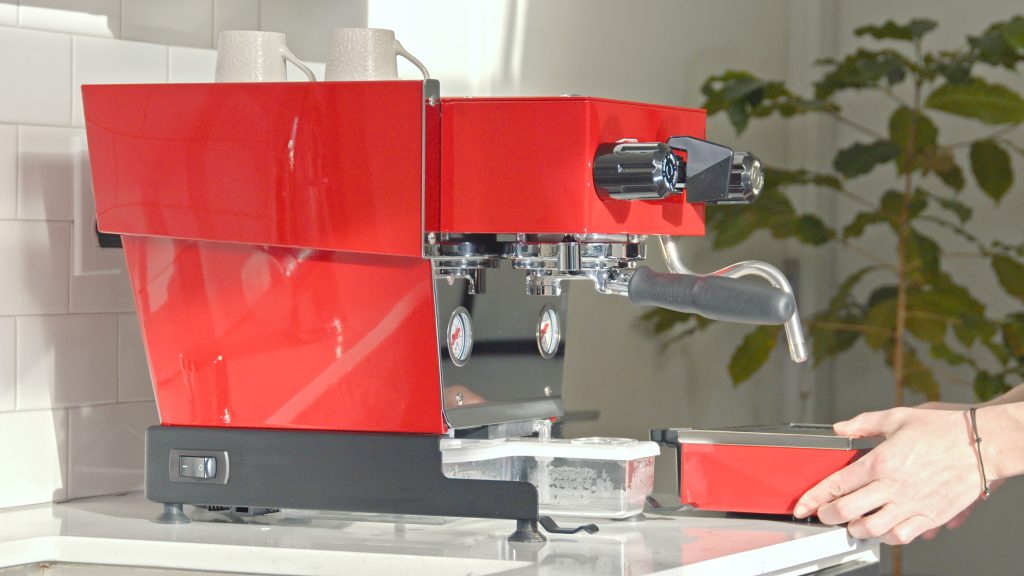
Using a water softener is essential to prevent scale buildup and maintain your machine’s performance. A water softener helps reduce the adverse effects of hard water, minimizing scale accumulation and ensuring optimal coffee quality. Regular maintenance practices like descaling, combined with the use of a water softener, can significantly extend the life of your espresso machine.
Let’s make sure you’re equipped with the knowledge to troubleshoot like a pro and keep your espresso flowing smoothly.
Diagnosing Common Steam Wand Problems
When your La Marzocco espresso machine isn’t working quite right, knowing how to diagnose the issue is the first step toward getting it back up and running. Here are some of the most common problems you might encounter and how to figure out what’s going wrong:
Low Water Pressure: If your shots are coming out slow or uneven, the issue may be with the water pressure. First, check that the water line or reservoir is full and properly connected. You might also have a clogged group head or filter, so inspect those areas and clean them if necessary.
Temperature Inconsistency: If the water isn’t heating up correctly, it could be due to scale buildup in the boiler or an issue with the heating element. Descaling the machine may fix the problem, but if the issue persists, you might need to have the heating element checked by a professional.
Steam Wand Issues: If your steam wand isn’t producing steam or is leaking, it could be clogged with milk residue or mineral buildup. Try cleaning it thoroughly, and check the seals to ensure they aren’t worn out or damaged.
Strange Noises: If your machine is making unusual sounds, like grinding or whistling, it could be due to an obstruction in the pipes or a problem with the pump. Running a backflush or descaling cycle may help, but persistent noises might indicate a more serious issue.
By diagnosing the problem early, you can often fix small issues before they become larger, more expensive repairs. If the problem isn’t immediately clear, it’s usually best to consult your machine’s manual or a professional technician for further troubleshooting.
DIY Fixes vs. Professional Repair
When something goes wrong with your La Marzocco espresso machine, the first question that often comes up is: Can I fix this myself, or do I need to call a professional? Understanding when a DIY fix is sufficient versus when it’s time to seek help can save you both time and money. Preventative maintenance, including yearly professional servicing, is crucial to avoid unexpected breakdowns and costly repairs.
Here’s a breakdown of what you can handle on your own and what’s best left to the experts:
DIY Fixes
Cleaning and Descaling: Routine cleaning, including backflushing, descaling, and replacing small parts like gaskets, is something you can easily manage at home with the right tools and instructions.
Replacing Seals and Gaskets: Over time, seals and gaskets may wear down and cause leaks or reduce pressure. Replacing these parts is usually a straightforward process that can be done with basic tools, following the manual or online tutorials.
Clearing Blockages: If you’re dealing with clogged group heads, steam wands, or portafilters, a deep clean with the right detergents or brushes can often solve the problem without needing professional help.
When to Call a Professional for Brew Boiler Issues
Electrical Issues: If your machine is not turning on or has temperature inconsistencies due to electrical problems, it’s best to leave this to a qualified technician. Trying to fix electrical components without proper knowledge can be dangerous and may void any warranties.
Pump or Boiler Malfunctions: Problems with the internal pump or boiler require advanced knowledge and specialized tools. If your machine is having pressure or heating issues that routine descaling can’t fix, it’s time to call in a professional.
Major Leaks or Structural Damage: If you notice significant water leakage or structural damage to your machine, don’t try to patch it up yourself. These issues can cause further damage if not repaired correctly.
In general, if the problem involves routine maintenance, cleaning, or replacing small parts, you’re good to go with a DIY fix. However, if it’s something more complicated—especially related to electrical or mechanical components—calling in a professional will ensure your machine gets the care it needs without risking further damage.
Quick Maintenance Tips
Flush the group head daily to keep it free of coffee residue.
Descale every 3-6 months to prevent mineral buildup.
Clean the steam wand immediately after each use to avoid milk residue hardening inside.
Check seals and gaskets regularly to catch any wear before it causes leaks.
Backflush with detergent monthly to clear out oils and buildup inside the machine.
Use a water softener to minimize scale accumulation and ensure optimal coffee quality.
Conclusion
Maintaining your La Marzocco espresso machine doesn’t have to be complicated, but it does require consistency. By sticking to a regular cleaning and maintenance routine, you’ll not only extend the life of your machine but also ensure that every espresso you pull is as perfect as the last. And when issues do arise, knowing whether to take a DIY approach or call in a professional will save you time and avoid costly mistakes. Treat your machine right, and it will continue to deliver those café-quality shots day in and day out.
FAQs: How to Maintain Your La Marzocco
How Do I Descale My La Marzocco Espresso Machine?
To descale your machine, use a recommended descale solution to remove scale build from the steam boiler and other internal components. Start by disconnecting the machine from the water line, then flush the system with the solution. Let it soak for about an hour, then rinse thoroughly by flushing clean water through the machine. This process prevents acid damage and ensures the taste of your espresso remains perfect.
What Maintenance Does the La Marzocco Linea Mini Require?
Regular maintenance for the Linea Mini includes cleaning the dispersion screens, checking the heads, and inspecting check valves for any signs of wear or being blocked. Keep the water tanks filled to avoid damage to the steam boilers, and periodically use a descaler to remove buildup. Regular care ensures your machine delivers café-quality espresso consistently.
How Do I Prevent Scale Build in My Machine?
Prevent scale build by using filtered water and performing routine descaling. A descaler helps remove mineral deposits, especially in areas like the steam boiler. Keeping the machine clean and flushed after use can minimize the risk of internal components becoming damaged or blocked.
What Should I Do If the Machine Feels Blocked or the Taste is Off?
If you notice a change in the taste of your espresso or suspect the machine is blocked, inspect the heads and check valves for buildup. Cleaning the dispersion screens and using a descaling process can often resolve these issues. Ensure the machine is properly flushed after maintenance.
How Do I Protect the Steam Boilers from Damage?
To maintain the steam boilers, always ensure the water tanks are filled and avoid allowing them to run dry. Mineral deposits from hard water can cause tear or buildup in the system, so using filtered water and performing regular descaling with an appropriate descaler can extend the lifespan of the steam boiler.
Where Can I Shop for Replacement Parts or Descaling Products?
You can shop for replacement parts like dispersion screens or cleaning products, such as a descale solution or descaler, directly from La Marzocco or specialty retailers. Regularly replacing worn parts helps keep your machine in top condition.
What Are Some Common Issues with Heat and Tanks?
If the machine struggles to maintain heat, it might indicate scale build in the boiler or tear in internal components. Ensure the water tanks are clean, free of debris, and filled regularly to prevent damage and maintain consistent performance.

